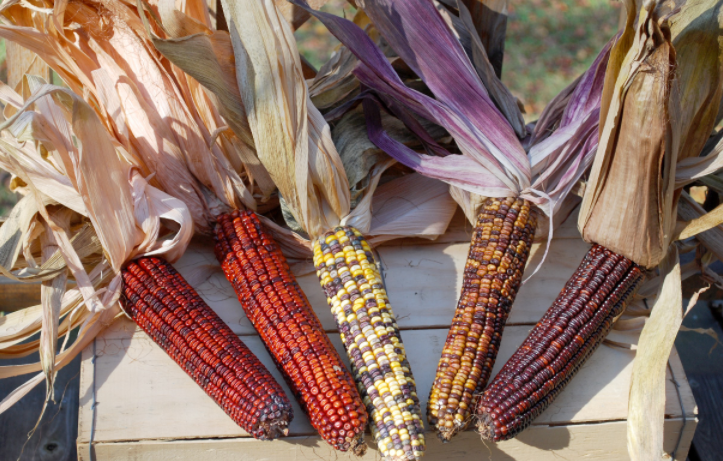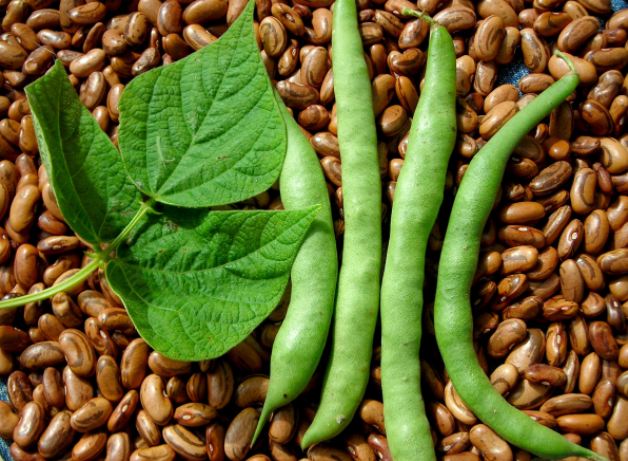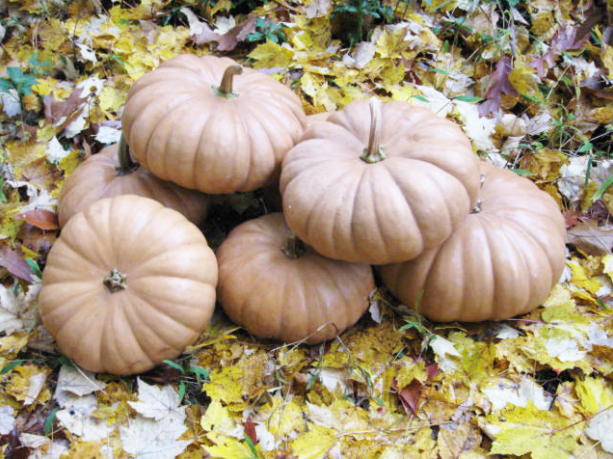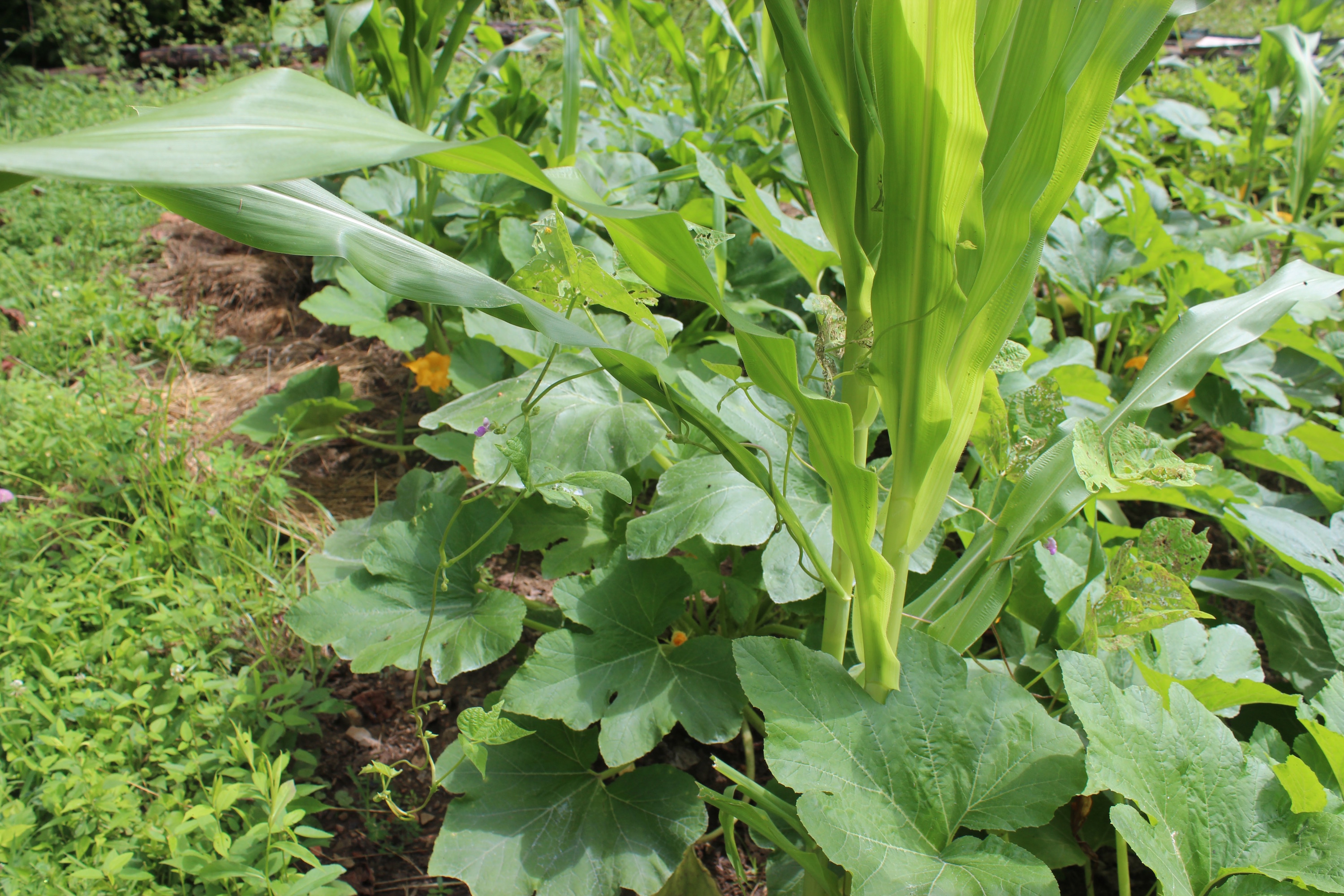The Three Sisters Garden has gained some popularity in recent years and for good reason. Unlike conventional agriculture The Three Sisters Garden works with nature to provide for the crops needs, keep maintanence low, and keep soil fertility up without the addition of chemical fertilizers. It’s was perfect for the Native Americans and is perfect modern organic gardener.
Before the advent of large agricultural equipment these features weren’t just nice and environmentally friendly they were necessary. Imagine gardening without metal tools, sprinklers or hoses, or commercial garden additives nevermind tractors and cultivators. The traditional Three Sisters Garden was easy to grow and provided the basic staples of the Native American diet. Together corn, beans, and squash provided balanced nutrition.
To plant a Three Sisters Garden the traditional way you should prepare a fairly large space. Corn needs plenty of plants in one area as it’s wind pollinated. In some cultures the space was circular to help with pollination. The corn is planted in hills about 5 inches high, 18 inches across and 5 feet apart. The tops should be flat to prevent rain water run off. These hills allow the soil to warm more quickly in the spring and allow for better drainage. Traditionally it was common to add some fertility to each hill like fish or fish scraps before planting. Unless you fish a lot, compost or manure will do for the modern garden. If using manure mix it with the soil or bury slightly so it doesn’t burn the plants. Plant 4 corns seeds in a six inch square in each hill.

Three Sisters gardening often works best with flint, dent, or flour corn varieties as they are harvested at the end of the season. If you choose sweet corn you’ll have to carefully make your way through sprawling squash plants to reap your harvest. Alternatively you can plant sunflowers in place of corn which was also done by some native cultures.
You can find Southern Exposure’s flour, flint, and dent corn varieties here. Native American varieties include Hickory Cane Dent Corn and Cherokee White Flour though other varieties work well too.
Once the corn is 4 inches tall it’s time to plant the beans. This is also a good time to give your patch a good weeding before the plants get large. Then you can plant 4 beans in each hill placing them 3 inches away from the corn plants completing your original square. They’ll use the corn plants as living trellis and provide them with nitrogen throughout the growing season. Corn is a very heavy feeder so sustained nitrogen is essential to a good crop. In choosing bean varieties make sure you purchase pole beans not bush beans. It’s also a good idea to choose native or heirloom varieties unless your using sunflowers in place of corn. Some modern bean varieties have such big vines they can be too heavy for corn plants.

You’ll also want to consider whether you want green beans or drying beans. Some varieties are dual purpose. Most Native Americans planted and harvested their beans as drying beans so that they could be harvest in the fall and stored for winter use.
You can check out Southern Exposure’s pole beans here.
Once the beans have sprouted it’s time to weed again and then plant the squash. Planting squash too early can shade out beans before they have a chance to start climbing. The squash should be planted in the in new mounds identical to those that were for the corn and beans. Plant three seeds and thin to just two per hill. The squash vines ramble throughout the garden shading our weeds and keeping soil moist. This is particularly advantageous in areas prone to drought because corn also requires good moisture for good harvests. When the squash shows its first true leaves it’s probably time to weed again.
Choosing squash can be difficult because of the variety of options. Any vining plant (not bush) in the cucurbit family will do though most native american grew winter squash varieties and harvested all there crops in the fall for storage throughout the winter. At Southern Exposure our favorites tend to be moschata squash plants. These varieties are more resistant to the squash vine borer and can be harvested early and used in summer squash recipes or left to mature and harvested as winter squash for storage. Some people have also used cucumbers, watermelons, and gourds with great success. Just keep in mind with cucumbers and melons you’ll need to carefully make your way through your patch to harvest while the other plants are still growing.

You can find Southern Exposure’s winter squash here. Once again the moschata cultivars can be eaten early as summer squash or eaten as winter squash. These include varieties like Seminole Pumpkin, Tahitian Melon Winter Squash, Thai Kang Kob Pumpkin, and more.
While they are called Three Sisters Gardens many Native Americans included more than just three crops. For instance the Wampanoag people planted sunflowers on the North side of the garden so they wouldn’t shade the other crops but would help attract pollinators. Some cultures also incorporated pollinator plants like bee balm or other crops like tobacco or amaranth which is grown for its edible leaves and seeds.
Growing a three sisters garden can be an easy fun project for the organic gardener. It’s low maintenance and beautiful. Though most people don’t have to grow corns, beans, and squash as staples anymore it can be a great way to keep organic gardening techniques, cultural traditions, and seed saving alive and well.
If you’re having a hard time choosing plant varieties consider Southern Exposure’s Three Sisters Garden Package which includes Bloody Butcher Corn, Genuine Cornfield Beans, and Seminole Pumpkin Squash seeds plus a planting guide.

